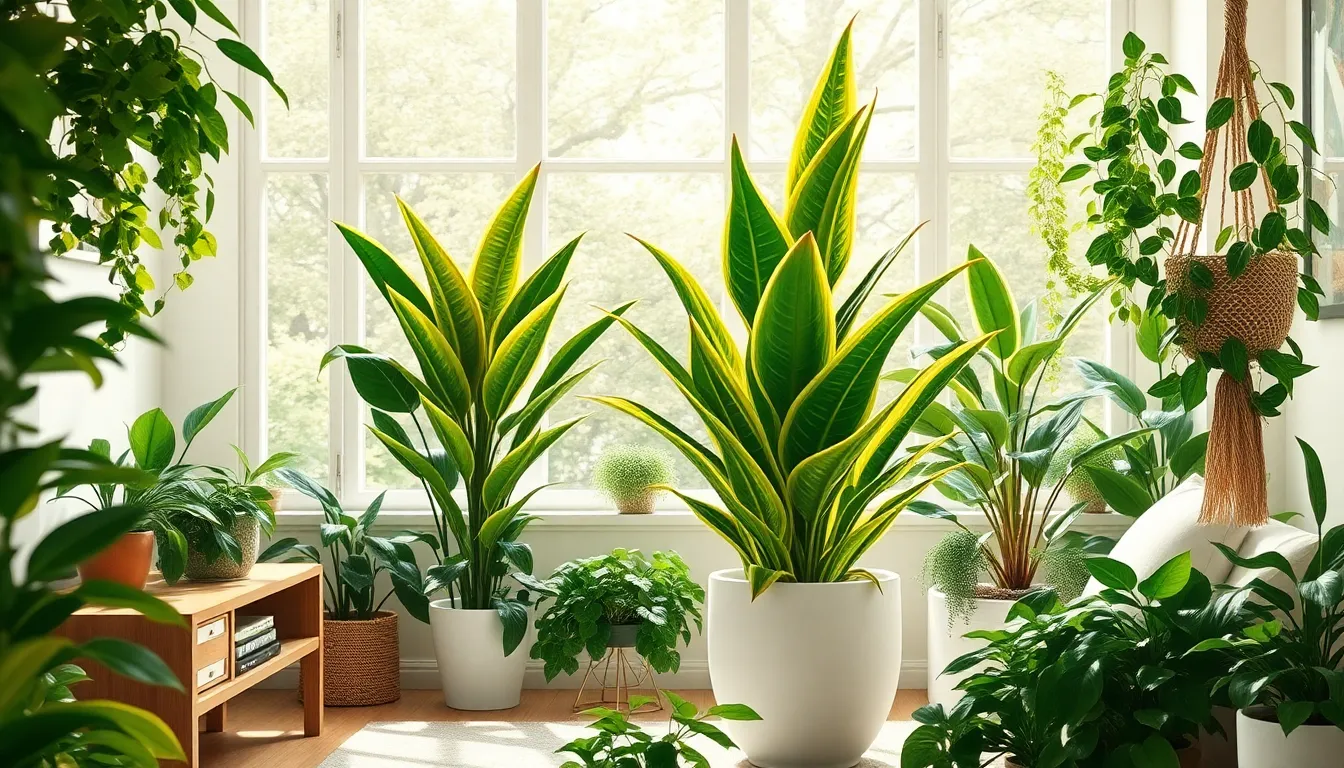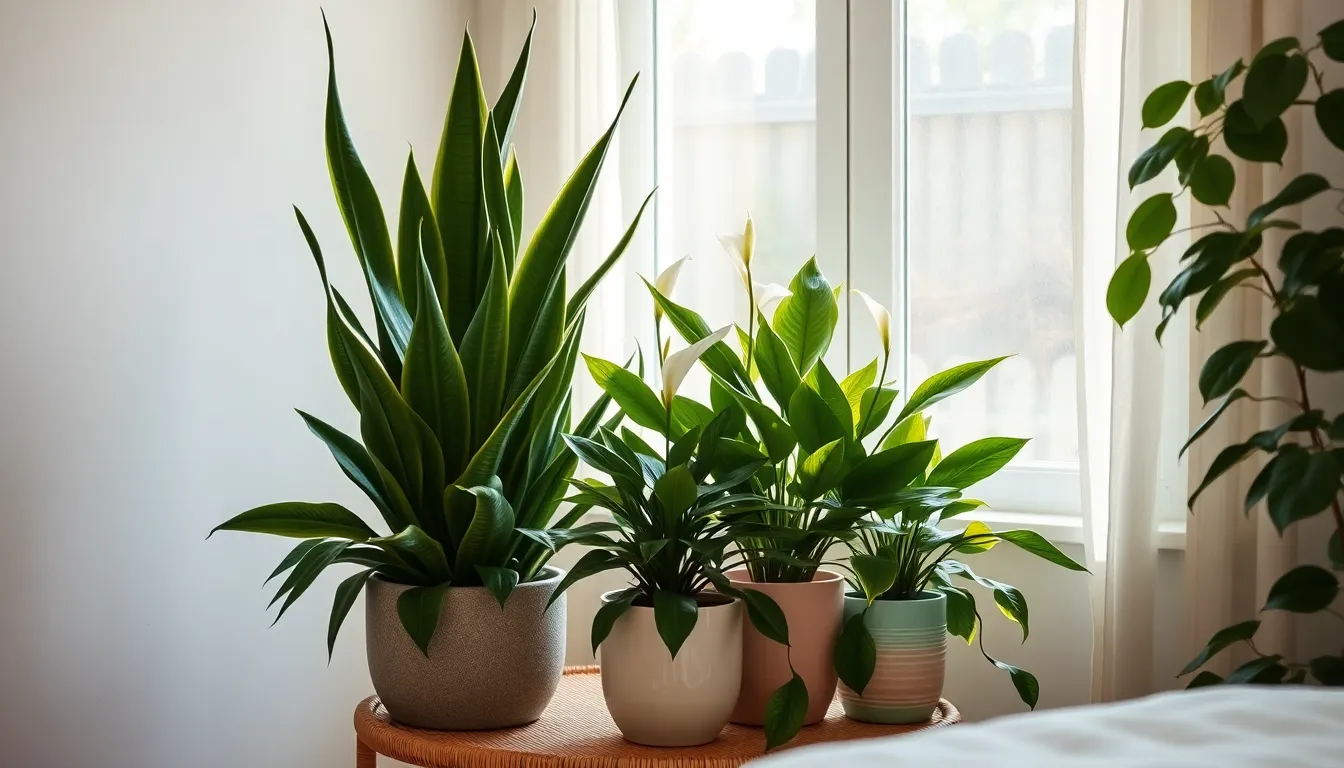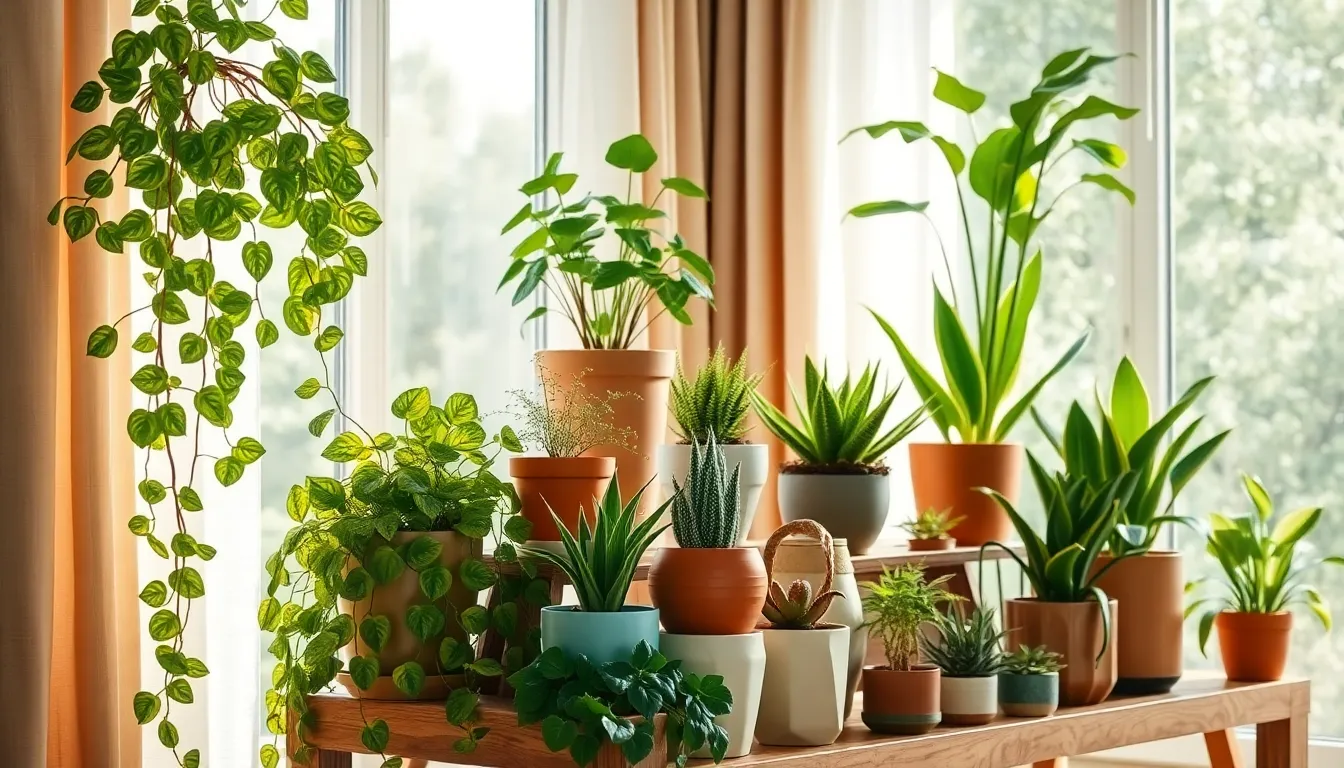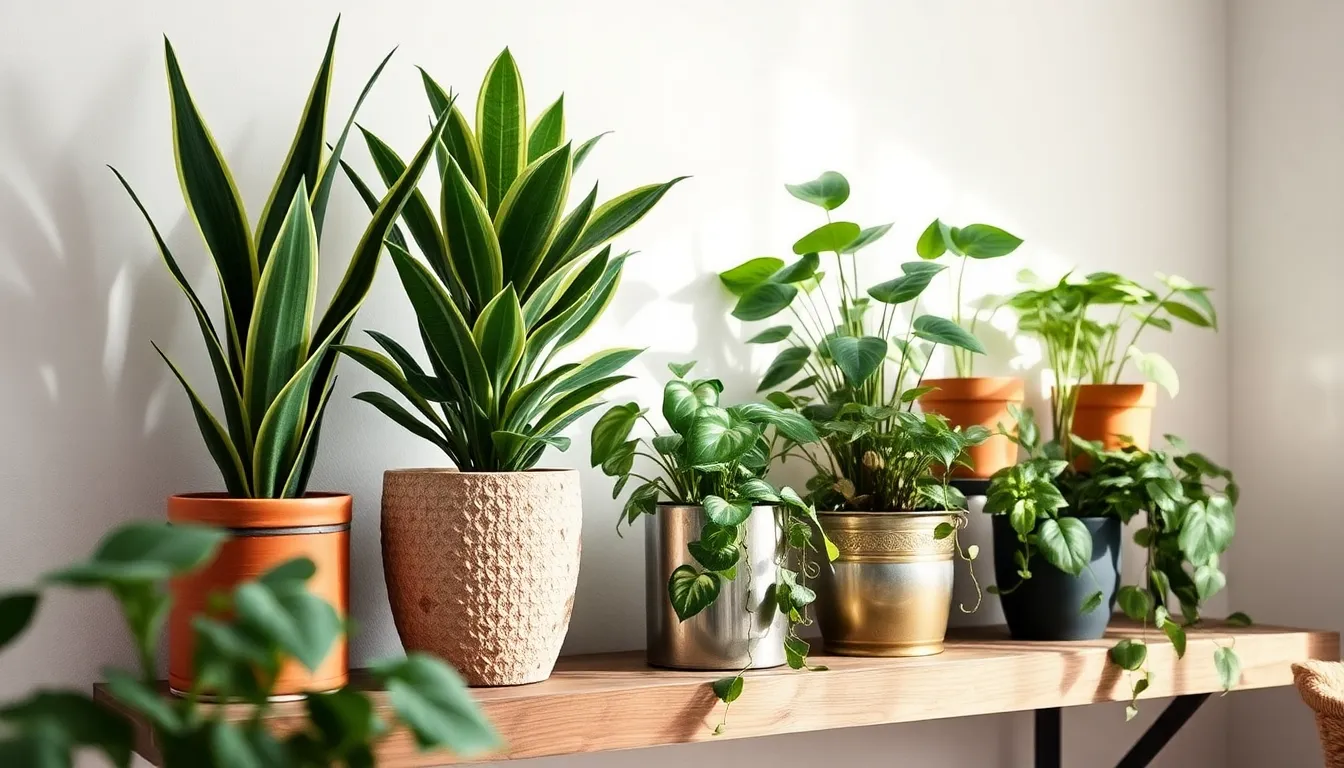Imagine stepping into your home and being greeted by a lush, green oasis that not only delights the senses but also purifies the air you breathe. Whether you’re a seasoned gardener or just starting your journey with houseplants, the concept of cultivating beauty that enhances your well-being is both inviting and rewarding. Indoor plants do more than just add aesthetic charm—they actively cleanse the air, making your home a healthier place to live.
In this article, we’re thrilled to guide you through a selection of ten stunning houseplants known for their air-purifying prowess. You’ll discover a variety of plants, each with its unique character and care requirements, ensuring there’s a perfect match for every type of indoor gardener. From the resilient Spider Plant to the graceful Peace Lily, we’ll explore options that are easy to nurture and thrive in diverse indoor environments.
Our goal is to empower you with practical insights and tips that make plant care accessible, regardless of your experience level. Whether you’re looking to introduce a single plant to your windowsill or transform your living space into a verdant retreat, you’re in the right place. Join us as we delve into the world of houseplants that not only enhance your home’s beauty but also contribute to a cleaner, healthier atmosphere.
Introduction to Air-Purifying Plants
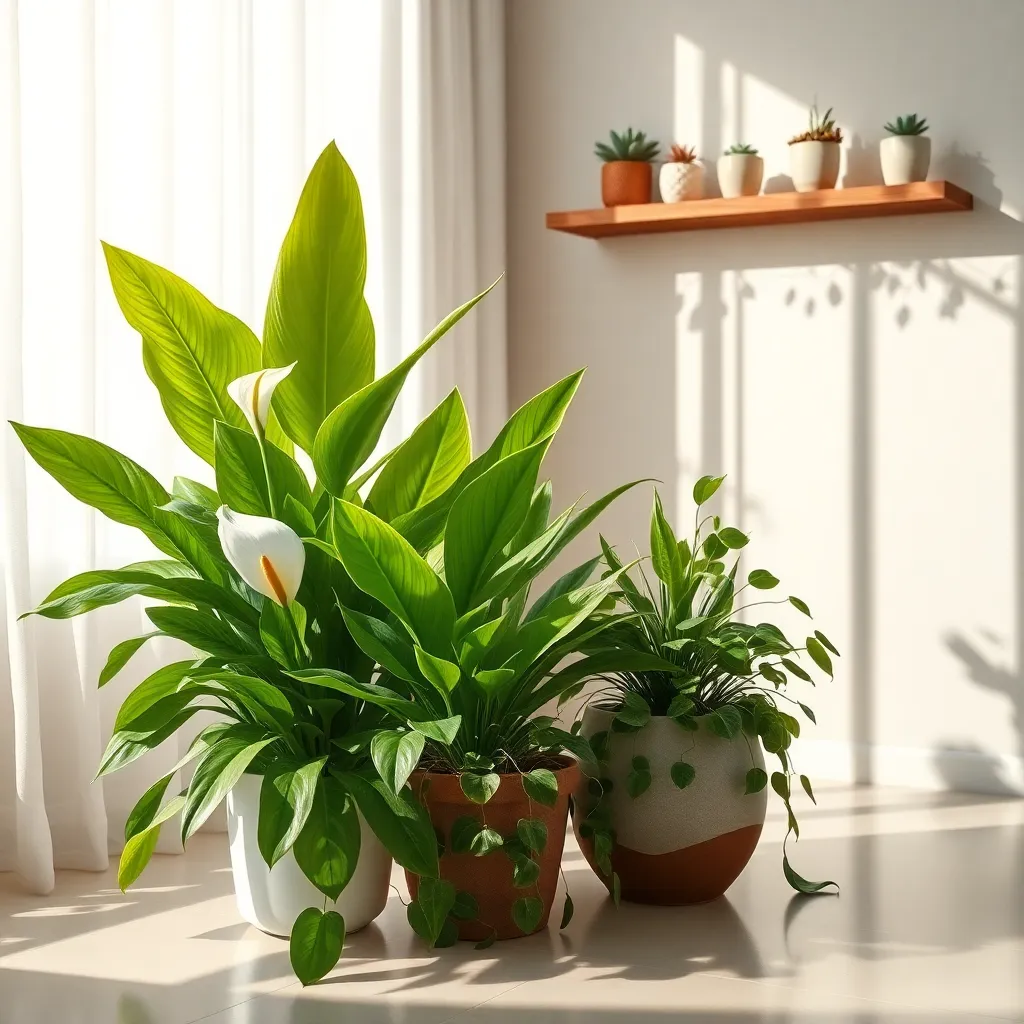
Houseplants are not only aesthetically pleasing but also serve a functional purpose by improving indoor air quality. Many common houseplants can effectively remove toxins such as formaldehyde and benzene, creating a healthier living environment.
For beginners, starting with low-maintenance air-purifying plants like the Snake Plant or Spider Plant can be a great choice. These plants thrive in a variety of light conditions and only need watering once every couple of weeks, making them ideal for those new to gardening.
More advanced gardeners might consider incorporating a Peace Lily into their collection, which requires more specific care. Peace Lilies prefer indirect light and consistently moist soil, so checking the soil moisture regularly with your finger is crucial for their health.
When selecting soil for these air-purifying plants, a well-draining potting mix is essential to prevent root rot. For maximum air-purifying benefits, ensure your plants are healthy by wiping their leaves with a damp cloth to remove dust and improve their ability to absorb air pollutants.
Benefits of Clean-Air Houseplants
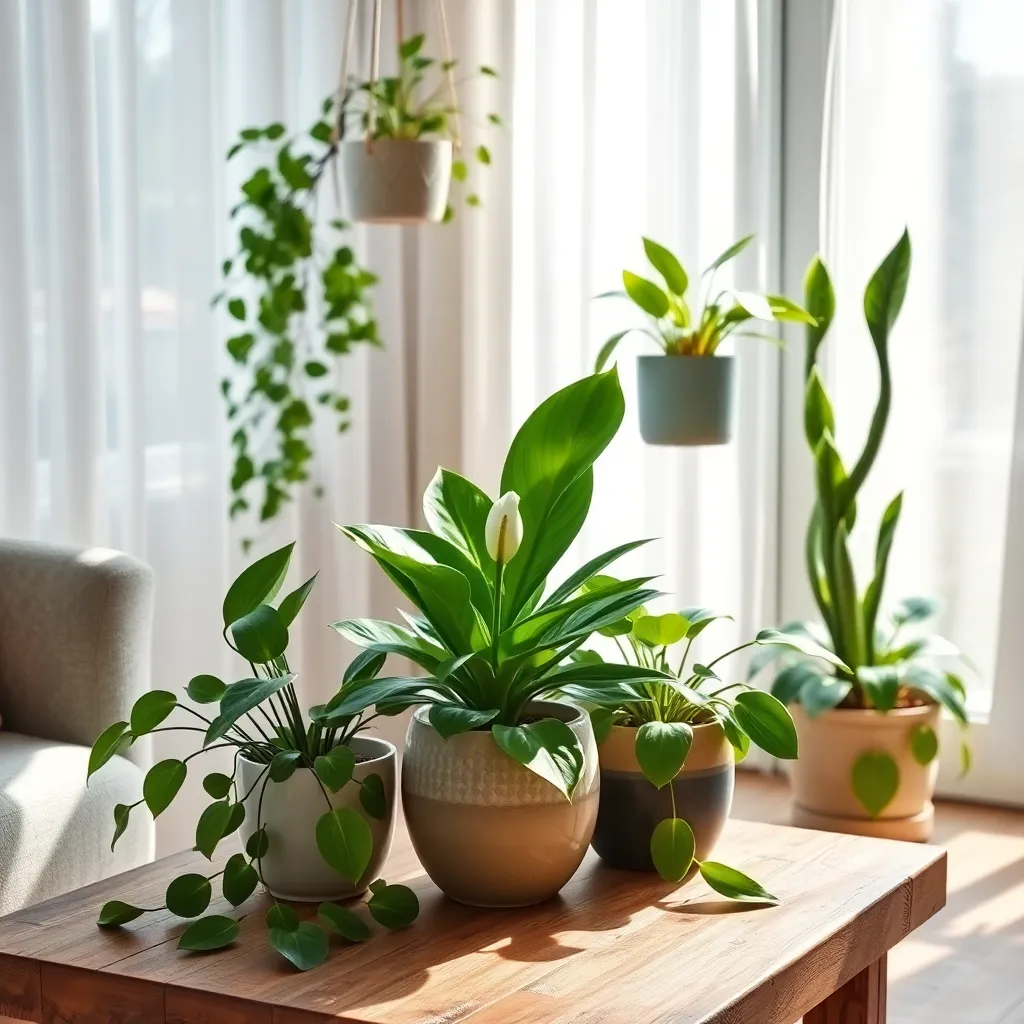
Houseplants do more than just beautify your home; they can also improve indoor air quality. Many common houseplants are known for their ability to absorb toxins and release oxygen, making your living space healthier.
Incorporating clean-air plants like the peace lily or spider plant can significantly reduce indoor pollutants. These plants are particularly effective at removing chemicals such as formaldehyde and benzene, which are commonly found in household items.
To maximize the air-purifying benefits of your plants, consider placing them in areas where air circulation is limited, like bedrooms or offices. This strategic placement allows the plants to filter more air and improve the overall air quality in those spaces.
For beginners, starting with plants like the snake plant or pothos is a great choice because they are low-maintenance and thrive in a variety of conditions. These plants require indirect light and only need to be watered when the top inch of soil feels dry, making them forgiving for novice gardeners.
Advanced gardeners can experiment with a broader range of air-purifying plants such as bamboo palm or rubber plant. These species may require more specific conditions, like higher humidity or precise watering schedules, but offer enhanced air-cleaning capabilities.
To enhance the effectiveness of your clean-air plants, use a well-draining potting mix and make sure pots have adequate drainage holes. This prevents overwatering and root rot, ensuring your plants stay healthy and able to perform their air-purifying duties.
Regularly dusting the leaves of your plants will also ensure they can efficiently photosynthesize and continue to purify the air. A damp cloth can be used to gently wipe the leaves, keeping them clean and free from dust buildup.
Choosing the Perfect Plant
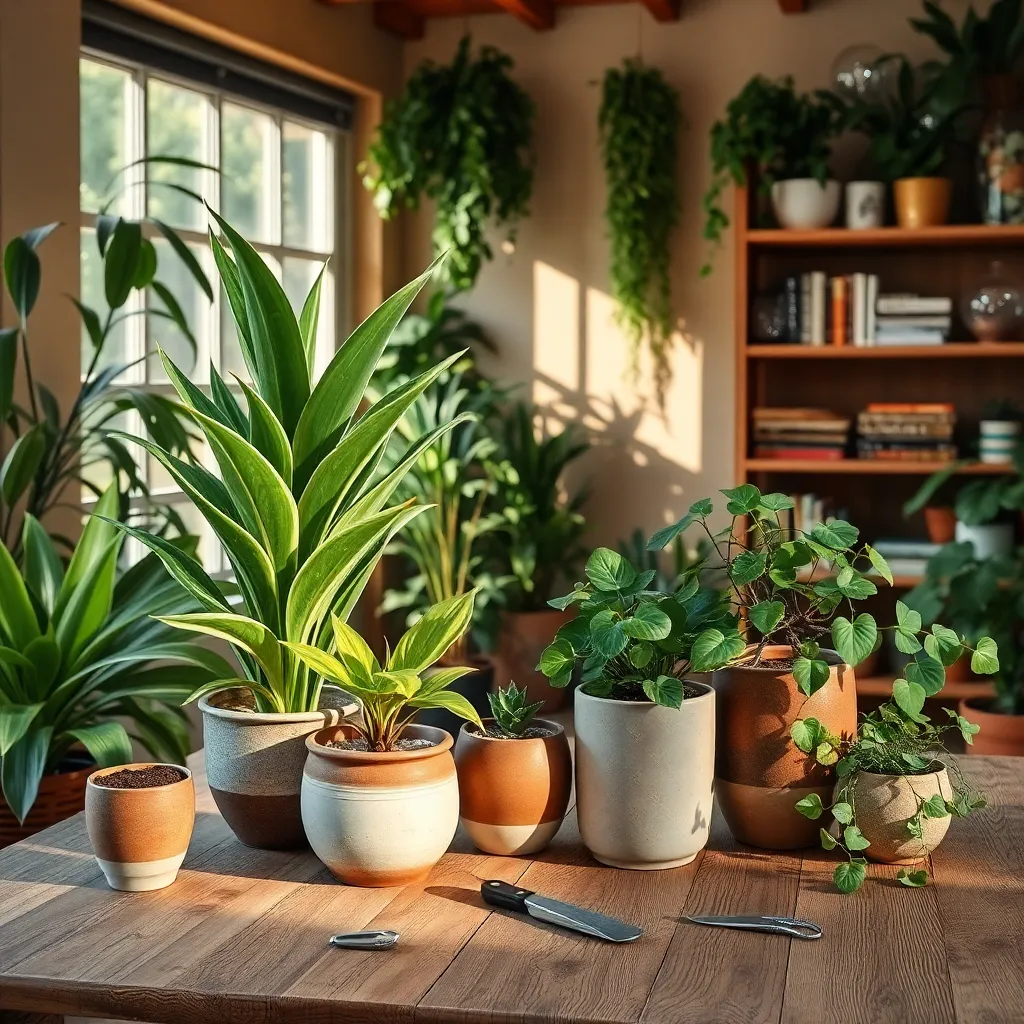
When selecting the perfect plant, consider the amount of light available in your space. Most clean-air houseplants, like the popular spider plant, thrive in bright, indirect light but can tolerate low light conditions, making them versatile choices for various rooms in your home.
It’s important to match your plant choice to the humidity levels in your home. Plants such as the peace lily prefer higher humidity, so placing them in a bathroom can be ideal for their growth and vitality.
Consider your dedication to plant care when choosing a houseplant. For those who might forget regular watering, plants like succulents or the hardy snake plant are excellent options as they require less frequent attention.
Additionally, think about the size and growth habits of the plant. Larger plants like the rubber tree can become stunning focal points but need enough space to thrive, while smaller plants like pothos can be perfect for shelves or hanging baskets.
Peace Lily: Elegant Purifier
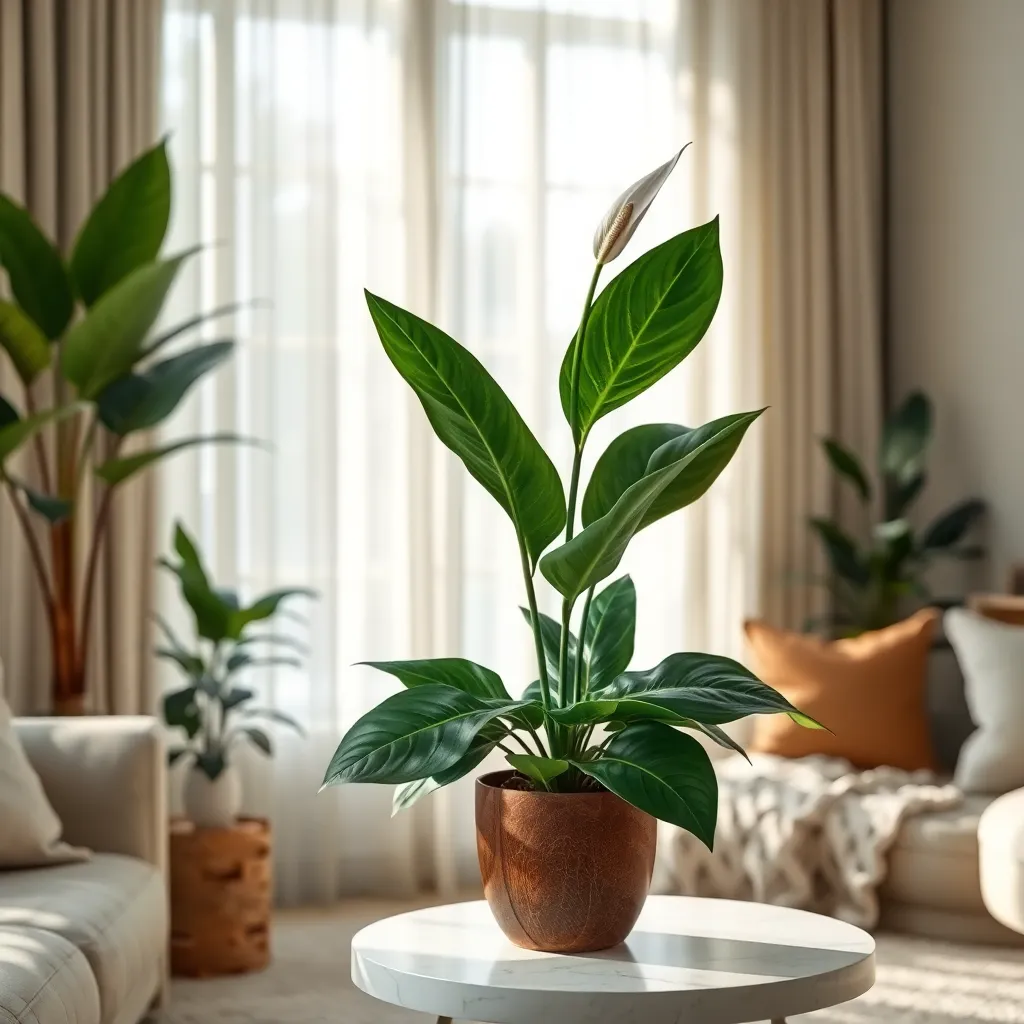
Peace lilies are not only elegant but also excellent air purifiers, making them a superb choice for indoor gardening. These plants thrive in low to medium light, which makes them perfect for most indoor spaces.
To care for your peace lily, ensure the soil remains consistently moist but not waterlogged. Use a well-draining potting mix, such as one enriched with perlite or coarse sand, to prevent root rot.
Water the plant when the top inch of soil feels dry, usually every 7 to 10 days. Peace lilies appreciate humidity, so consider misting the leaves periodically or placing the pot on a tray of pebbles with water.
For more advanced care, fertilize peace lilies every six to eight weeks during the growing season with a balanced, water-soluble fertilizer. Regularly wipe the leaves with a damp cloth to remove dust and enhance their natural shine.
- Light: Low to medium indirect light
- Watering: Keep soil moist, water when top inch is dry
- Humidity: Prefers higher humidity levels
Spider Plant: Hardy and Effective
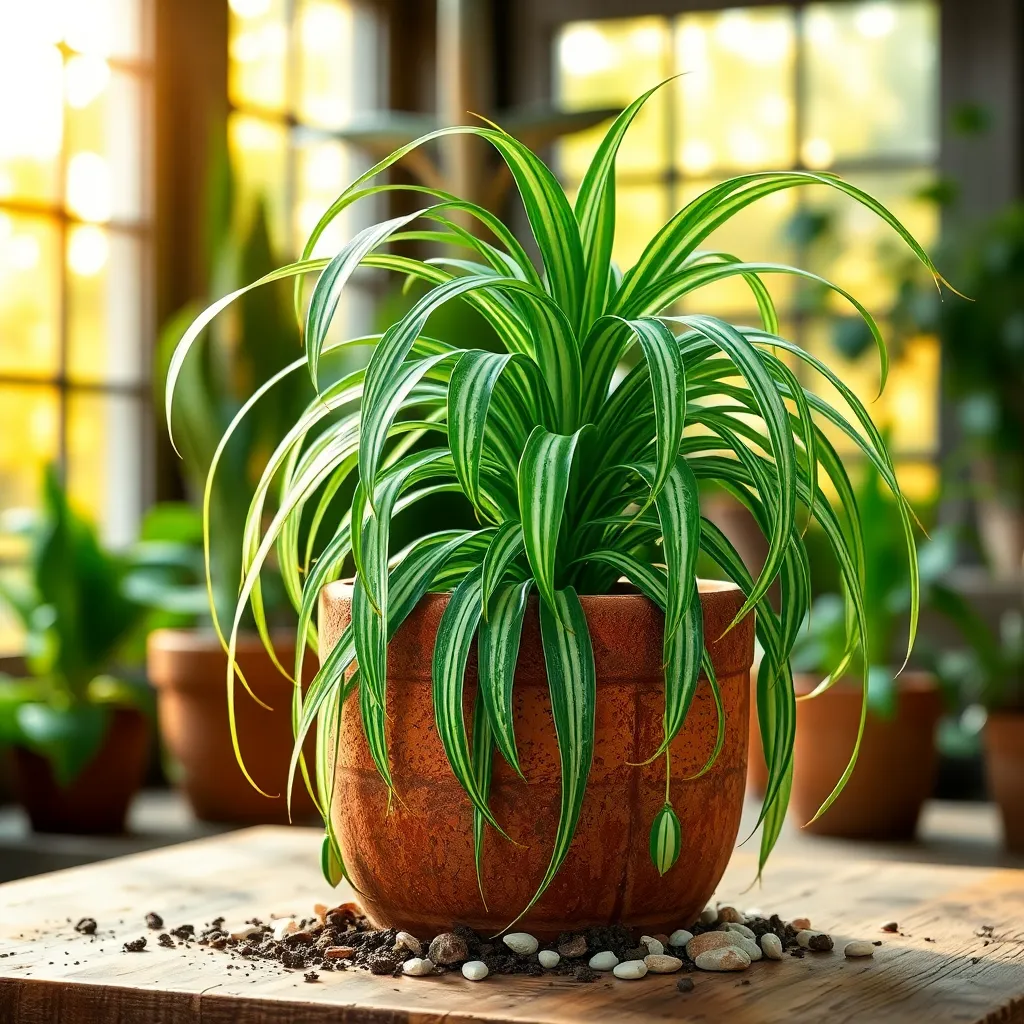
Spider plants are known for their resilience and their ability to thrive in various environments, making them ideal for beginners. These hardy plants are not only easy to care for but also incredibly effective at improving indoor air quality by removing pollutants such as formaldehyde and xylene.
To ensure your spider plant flourishes, place it in a spot with indirect light, as too much direct sunlight can scorch its leaves. Water the plant sparingly, allowing the top inch of soil to dry out between waterings to prevent root rot.
Using a well-draining potting mix is essential for spider plants, as they prefer to have their roots slightly cramped in smaller pots. Repot your spider plant every couple of years in the spring to refresh the soil and provide more space for root growth.
For more advanced care, consider using a balanced liquid fertilizer monthly during the growing season to encourage lush foliage. If you notice brown tips on the leaves, this might be due to fluoride in tap water, so using distilled water can help maintain the plant’s health.
Snake Plant: Low-Maintenance Cleaner
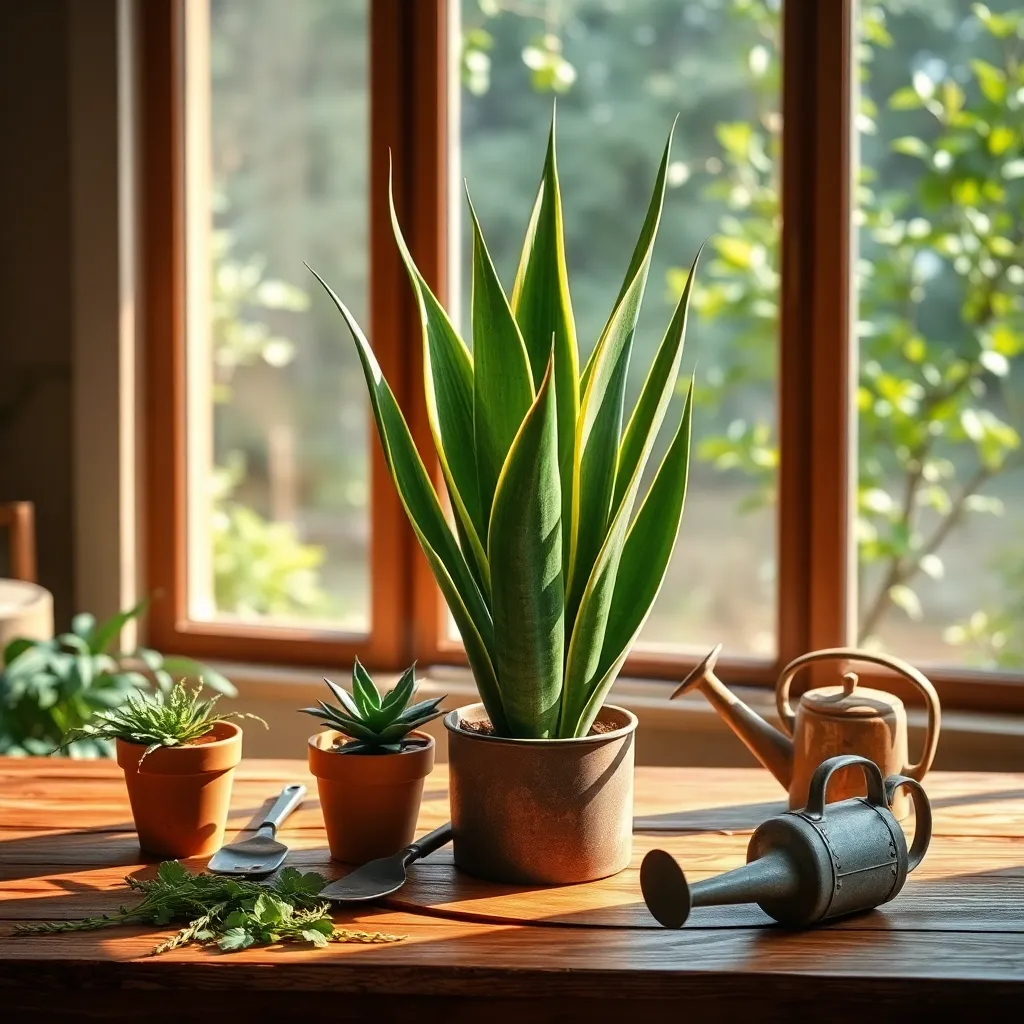
The snake plant, also known as Sansevieria, is a perfect choice for busy gardeners looking for a low-maintenance option. It thrives on neglect, making it ideal for those who might forget to water their plants regularly.
To ensure your snake plant remains healthy, place it in a spot with indirect sunlight. While it can tolerate low-light conditions, bright, indirect light will help it grow more robustly.
Watering should be infrequent, as snake plants are drought-tolerant. Allow the soil to dry out completely between waterings to prevent root rot.
For optimal growth, use a well-draining potting mix, such as a cactus or succulent blend. Repotting every couple of years can also encourage better growth, as these plants prefer to be slightly root-bound.
Aloe Vera: Healing and Purifying
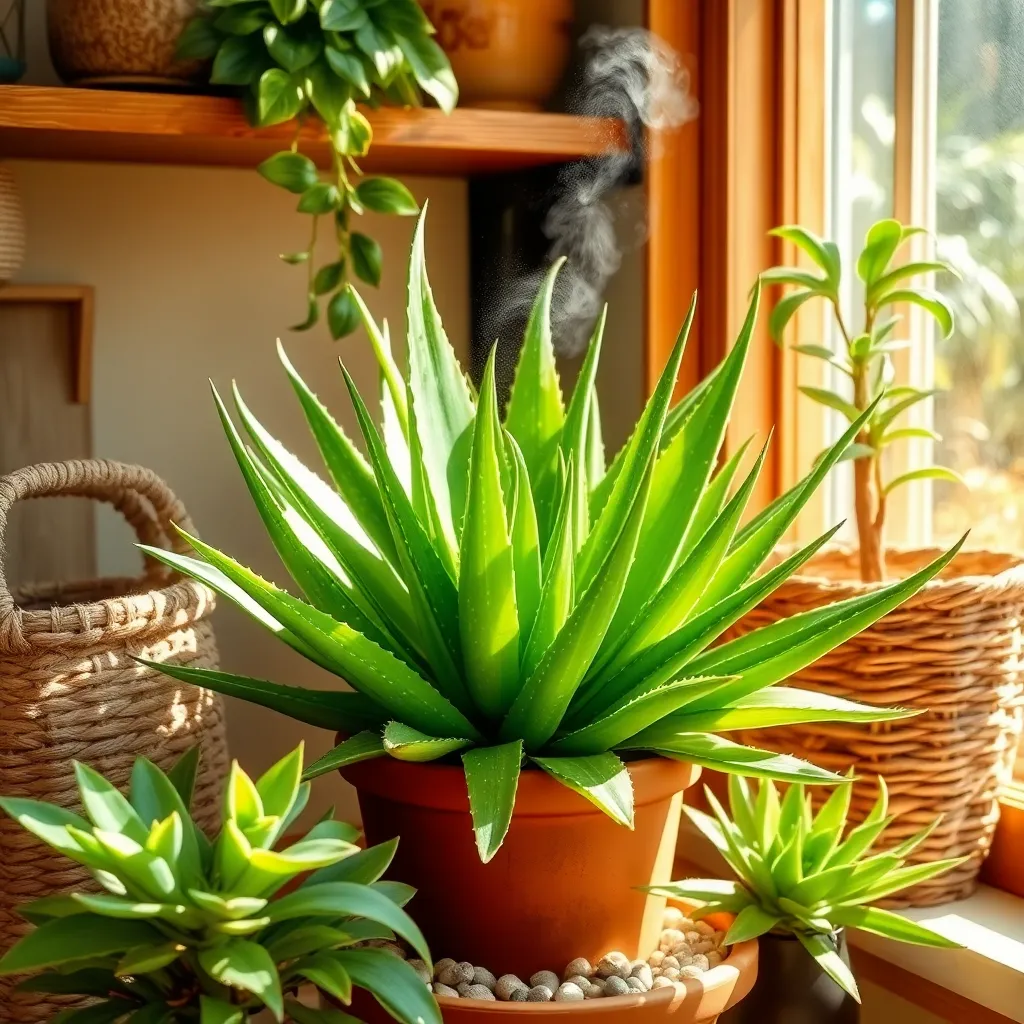
Known for its healing properties, Aloe Vera is also a fantastic air purifier. This succulent is easy to grow indoors, making it a great choice for both beginners and seasoned gardeners.
To ensure your Aloe Vera thrives, place it in a spot where it can receive indirect sunlight. Too much direct sunlight can cause the leaves to turn brown, so monitor its exposure carefully.
Water your Aloe Vera sparingly, allowing the soil to dry out completely between waterings. Overwatering is a common mistake, so it’s better to err on the side of caution.
For optimal growth, use a well-draining potting mix designed for cacti and succulents. You can also add a bit of sand or perlite to improve drainage if needed.
Advanced gardeners might consider propagating Aloe Vera by removing and rooting offsets, also known as “pups.” This process not only multiplies your plants but also keeps the parent plant healthy and thriving.
Boston Fern: Humidity Lover
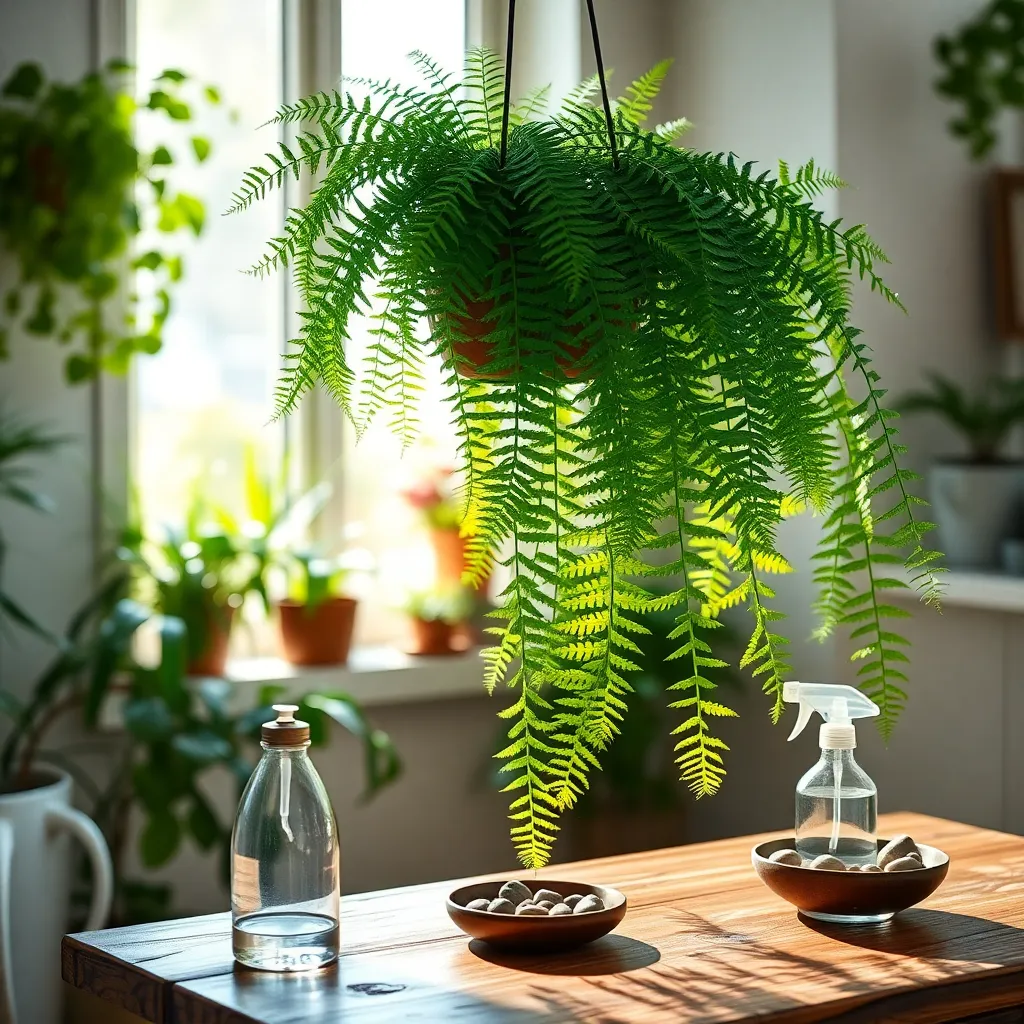
Boston Ferns are renowned for their ability to improve indoor air quality while adding lush greenery to your home. These plants thrive in high humidity environments, making them perfect for bathrooms or kitchens where moisture levels are naturally higher.
To keep your Boston Fern thriving, ensure it receives indirect light, as direct sunlight can scorch its delicate fronds. For optimal growth, place the fern near a north or east-facing window or use sheer curtains to diffuse intense sunlight.
Watering is crucial for Boston Ferns, as they prefer consistently moist soil but dislike waterlogged conditions. Aim to water them when the top inch of soil feels dry, and consider using a pot with drainage holes to prevent root rot.
Advanced care includes regularly misting the plant or using a humidity tray to maintain an environment of 50% humidity or higher. For those looking to fertilize, apply a balanced liquid fertilizer monthly during the growing season to promote lush growth.
Care Tips for Healthy Plants
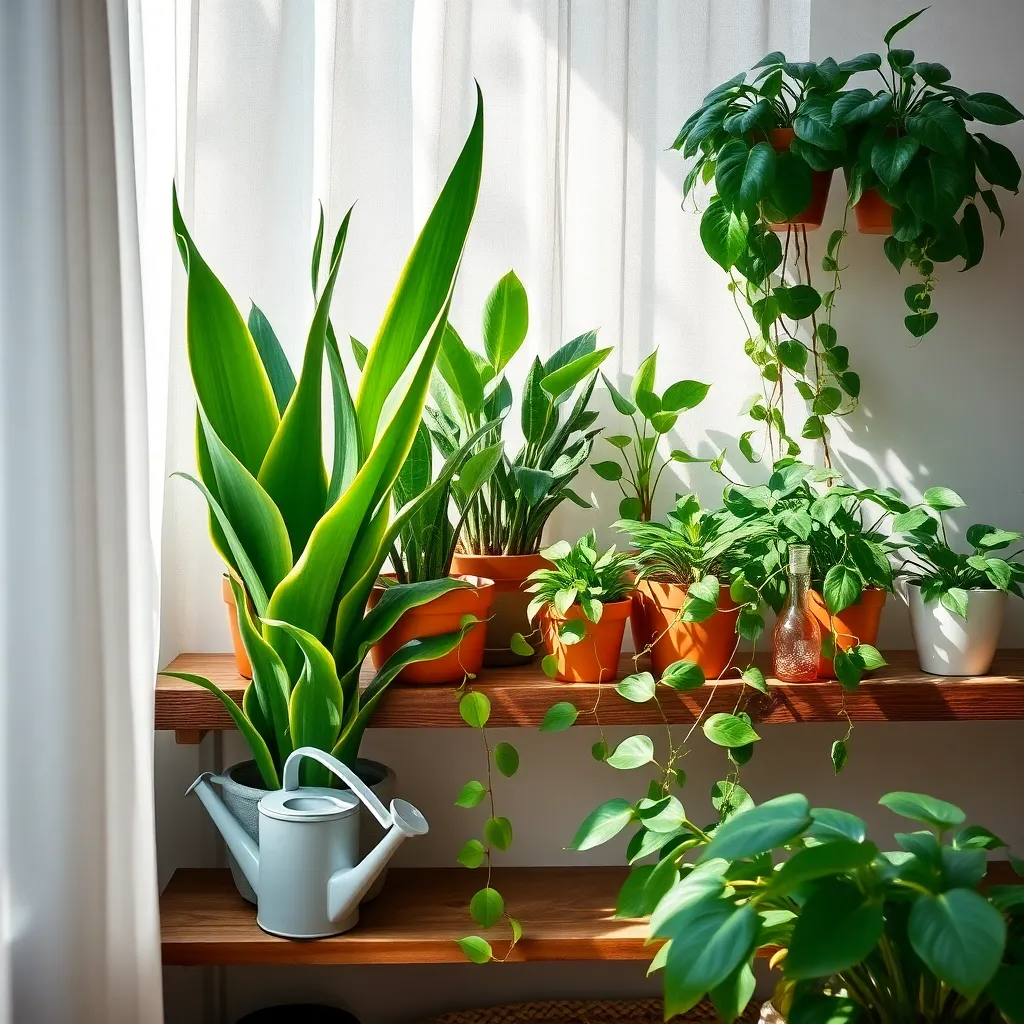
To ensure your houseplants thrive, it’s crucial to understand their specific needs and provide them with the right conditions. Start by placing your plants in areas that match their light requirements; for instance, while the Boston Fern enjoys indirect sunlight, others like the Snake Plant tolerate low light.
Watering is another key factor in plant health, and it’s essential to strike the right balance. For most houseplants, allow the top inch of soil to dry out before watering again, but remember that humidity-loving plants like ferns may need more frequent attention.
Soil choice can significantly impact plant growth, so select a mix that suits your plant type. Use well-draining potting mix for succulents, while ferns benefit from a soil rich in organic matter. This ensures roots receive both moisture and air, preventing rot and promoting healthy growth.
Advanced care involves monitoring your plant’s environment and making adjustments as needed. Check for signs of stress, such as yellowing leaves or stunted growth, and adjust watering, light, or temperature accordingly. Regularly dusting leaves allows your plants to photosynthesize efficiently and can help keep pests at bay, ensuring your home remains a healthy, green oasis.
Creating a Fresh Indoor Oasis
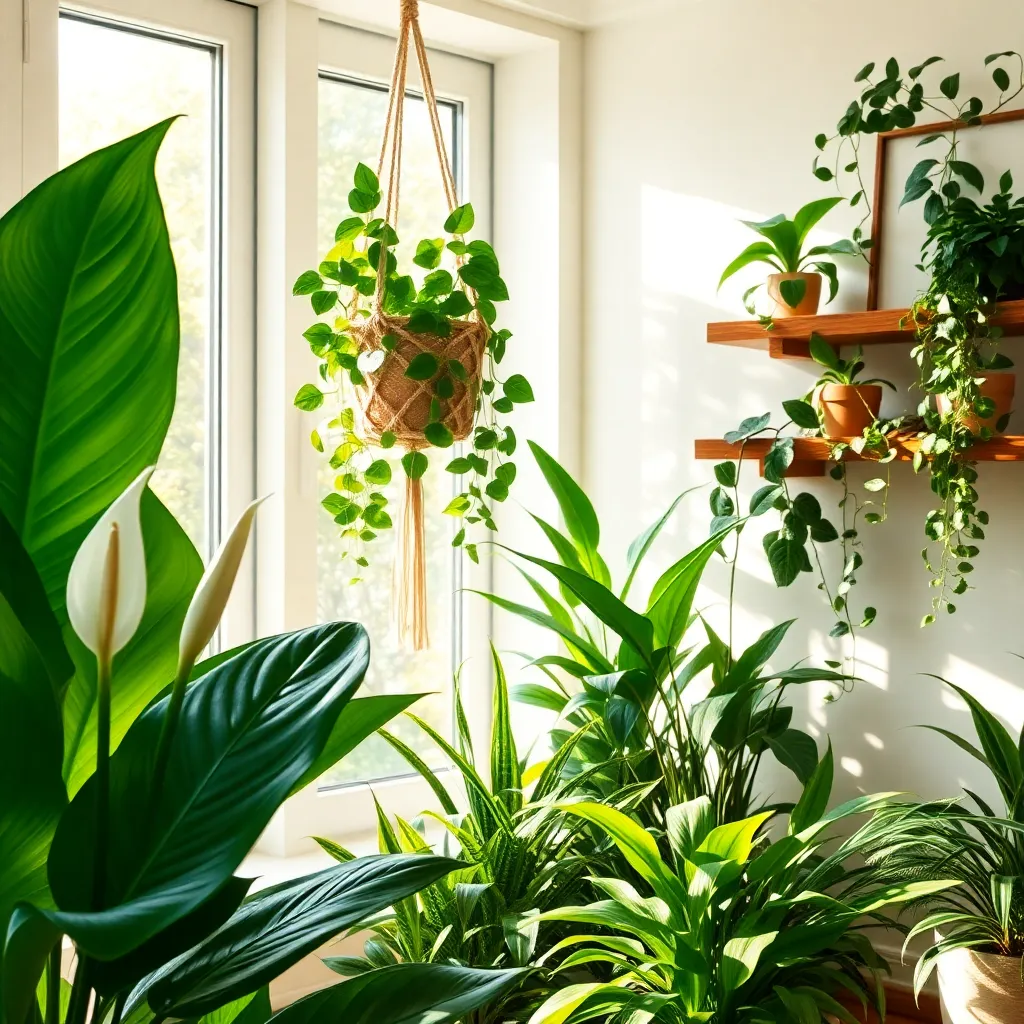
Creating a fresh indoor oasis begins with choosing the right houseplants that not only beautify your space but also purify the air. Consider plants like the Spider Plant, Peace Lily, or Snake Plant, known for their air-cleaning properties and easy maintenance.
When selecting houseplants, ensure they are suited to the lighting conditions of your home. For example, Spider Plants thrive in bright, indirect light, while Peace Lilies can tolerate lower light levels.
Watering is crucial for a thriving indoor oasis, and it’s essential to understand each plant’s needs. A good rule of thumb is to allow the top inch of soil to dry out before watering most houseplants to prevent overwatering.
Enhancing the humidity around your plants can also contribute to their health and vitality. Consider using a pebble tray or a small humidifier, especially during the dry winter months, to keep your plants lush and happy.
For those looking to go beyond basic care, fertilizing your plants can promote vigorous growth. Use a balanced, water-soluble fertilizer every 4-6 weeks during the growing season to provide essential nutrients.
Finally, remember that regular maintenance is key to a thriving indoor oasis. This includes tasks like wiping down leaves to remove dust, pruning dead foliage, and rotating plants to ensure even growth.
Conclusion: Growing Success with These Plants
In exploring the enriching world of houseplants, we’ve uncovered ten gems that not only purify your air but can also nurture the bonds within your home. From the resilient Snake Plant and the tranquil Peace Lily to the vibrant Boston Fern and Aloe Vera, these green companions symbolize resilience, adaptability, and growth—key elements in any thriving relationship. Each plant teaches us patience, the importance of a nurturing environment, and the beauty of growth, mirroring the dynamics of our personal connections.
To bring these insights to life, consider adopting a houseplant today. Allow it to remind you daily of the care and attention your relationships deserve. As you nurture this new addition, reflect on how its care parallels the love and attention needed to sustain and deepen your bonds with loved ones.
Bookmark this article as a handy guide and source of inspiration. Let it serve as a reminder that the small, daily acts of care can lead to flourishing relationships. As you cultivate these green treasures, know that you’re also sowing the seeds for enduring relationship success. Your journey towards more meaningful connections starts with a single, mindful step today.

